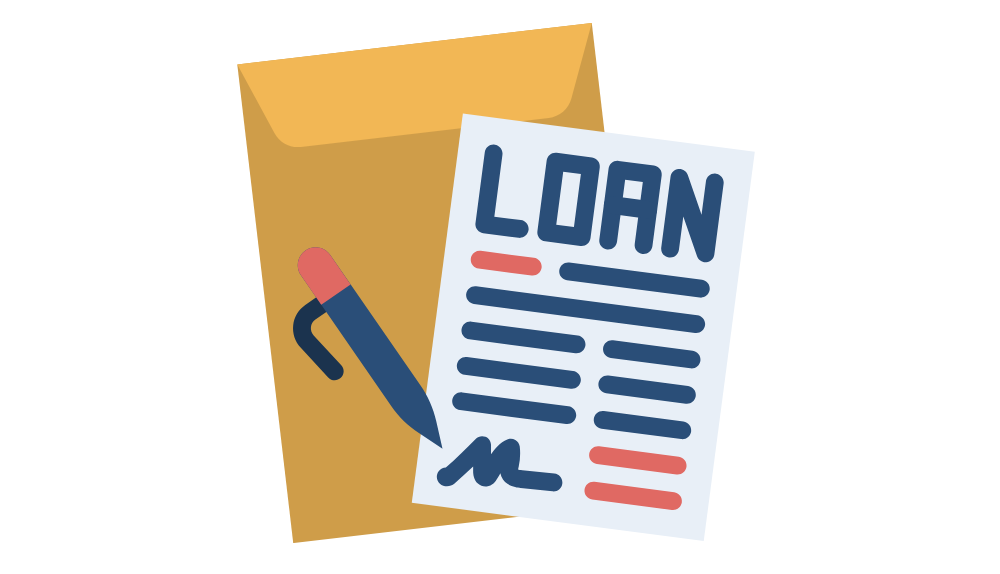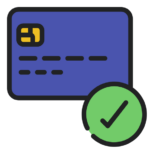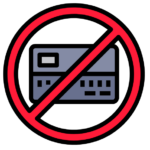Imagine standing at the crossroads of your entrepreneurial journey, brimming with innovative ideas but facing the daunting challenge of securing adequate funding. For many entrepreneurs, an SBA loan can serve as a vital bridge between aspiration and achievement, providing the financial resources necessary to transform their vision into a thriving business. This comprehensive guide will delve into the myriad ways you can leverage an SBA loan to ignite your business growth and success while illuminating the benefits, requirements, and strategies of these powerful financial instruments.
What is an SBA Loan?
An SBA loan, or Small Business Administration loan, is a financing option crafted to support small businesses in the United States. The SBA collaborates with a network of approved lenders, including banks, credit unions, and alternative financing sources, to provide loans backed by the federal government. Although the SBA does not lend money directly, it guarantees a portion of the loan, which minimizes the lender’s risk and facilitates more accessible access to capital for entrepreneurs.
One of the distinguishing features of SBA loans is their favorable terms compared to conventional loans. These include lower interest rates, longer repayment periods, and more flexible qualifying criteria, making them an attractive option for businesses at various stages of development. SBA loans can be utilized for multiple purposes, including startup costs, equipment purchases, debt refinancing, and real estate acquisitions.
Types of SBA Loans
The SBA offers several loan programs tailored to meet diverse business needs. Each program has specific eligibility criteria and benefits, ensuring small business owners can find the right funding option for their unique circumstances. Here’s an overview of the main types of SBA loans:
1. SBA 7(a) Loan
The SBA 7(a) loan program is the most popular and versatile option. It caters to a broad spectrum of business needs, including:
- Working Capital: Cover day-to-day operational expenses such as payroll, rent, and inventory.
- Equipment Purchase: Acquire new or upgraded machinery essential for operations.
- Debt Refinancing: Consolidate existing high-interest debts into a manageable loan.
- Business Expansion: Fund growth initiatives like opening new locations or increasing marketing.
Loan amounts range from $30,000 to $5 million, with repayment terms typically extending up to 10 years for general financing and up to 25 years for real estate purchases. Interest rates usually fall between 5% and 10%.
2. SBA CDC/504 Loan
Designed for businesses looking to finance significant fixed assets, the CDC/504 loan program offers long-term, fixed-rate financing for commercial real estate or major equipment purchases. Key features include:
- Loan Amount: Up to $5 million.
- Down Payment: Typically 10% of the total project cost.
- Repayment Terms: Available terms of 10, 20, or 25 years.
These loans benefit businesses aiming to expand their facilities or invest in costly machinery.
3. SBA Microloan
The Microloan program is tailored for startups and small businesses needing smaller amounts of capital, typically ranging from a few thousand dollars to $50,000. This program is particularly advantageous for entrepreneurs struggling to secure traditional financing. Additionally, microloans often come with added support through mentorship and technical assistance.
4. SBA Disaster Loans
The SBA provides disaster loans to help affected businesses recover from natural disasters. These loans can cover physical damage and economic injury, offering up to $2 million for repairs, replacement, and working capital during recovery.
5. SBA Export Loans
For businesses engaged in international trade, SBA Export Loans support export-related activities. This includes financing export orders, developing foreign markets, and expanding export capabilities. The maximum loan amount for these programs is typically up to $5 million.
6. SBA CAPLines
CAPLines are designed for short-term working capital needs, helping businesses manage seasonal cash flow fluctuations and specific project financing. These loans are ideal for businesses with fluctuating income throughout the year.
7. SBA Community Advantage Loans
Focused on underserved communities, Community Advantage Loans provide up to $250,000 in financing for various business needs, from working capital to equipment purchases. This program is aimed at businesses that may struggle with traditional lending options.
How to Use an SBA Loan Effectively
Understanding how to utilize an SBA loan effectively can significantly impact your business’s success. Here are several strategic ways to leverage these funds:
1. Start or Expand Your Business
Whether launching a new venture or expanding an existing one, SBA loans provide the capital to cover startup costs, purchase equipment, and hire staff. For instance, a restaurant owner might use an SBA loan to purchase kitchen equipment, lease a location, and cover initial marketing expenses.
2. Refinance Existing Debt
If high-interest loans burden your business, consider using an SBA 7(a) loan to refinance this debt. Consolidating your debts into a single loan with a lower interest rate can alleviate financial stress and improve cash flow.
3. Invest in Marketing and Branding
To grow your customer base, allocate a portion of your SBA loan towards marketing initiatives. Whether it’s online advertising, social media campaigns, or rebranding efforts, investing in marketing can yield significant returns and elevate your business profile.
4. Purchase Inventory or Equipment
Using SBA funds for these purchases can enhance operational efficiency for businesses that rely heavily on inventory or specialized equipment. For example, a retailer might stock up on seasonal inventory or a manufacturer might invest in new machinery to boost production capabilities.
5. Real Estate Acquisition
If your business requires a physical location, consider using an SBA CDC/504 loan to purchase commercial real estate. Owning property can reduce long-term costs compared to leasing and stabilize your business operations.
6. Build Emergency Reserves
Establishing a financial cushion can protect your business during unexpected downturns. Consider setting aside some of your SBA loan funds to create an emergency reserve, ensuring you can weather financial storms.
Benefits of SBA Loans
The advantages of securing an SBA loan extend beyond just access to capital. Here are several key benefits:
1. Favorable Loan Terms
SBA loans generally offer lower interest rates and longer repayment terms than conventional loans, making it easier for borrowers to manage their monthly payments.
2. Lower Down Payments
Many SBA loans require minimal down payments, allowing business owners to retain more working capital for operational expenses.
3. Flexible Use of Funds
The versatility of SBA loans enables entrepreneurs to allocate funds towards various business needs, from purchasing equipment to investing in marketing campaigns.
4. Support for Startups
SBA loans are particularly accessible for startups and small businesses struggling to obtain traditional financing. This support is vital for fostering innovation and entrepreneurship in the economy.
5. Counseling and Resources
The SBA provides valuable resources, including business counseling and training programs, to help borrowers manage their loans and grow their businesses effectively.
6. Building Credit History
Successfully repaying an SBA loan can enhance your business credit profile, making it easier to secure future financing.
Requirements for SBA Loans
While SBA loans offer numerous benefits, they come with specific requirements that borrowers must meet:
1. Eligible Business Type
Your business must qualify as a small business according to the SBA’s standards, which vary by industry. Eligibility is generally based on factors such as annual revenue and the number of employees.
2. Good Credit History
Lenders will assess the creditworthiness of both the business and its owners. A strong credit history is advantageous, though some programs may accommodate lower scores, particularly for startups.
3. Collateral
Most SBA loans require collateral to secure the loan. This may include business assets, real estate, or personal assets.
4. Business Plan
A comprehensive business plan outlining your business model, market analysis, financial projections, and repayment strategy is often required.
5. Financial Statements
You must provide financial statements, including profit and loss statements, balance sheets, and cash flow projections, to demonstrate your business’s financial health.
6. Personal Guarantee
Business owners typically need a personal guarantee, making them liable for repayment if the business defaults.
7. Documentation
Be prepared to submit various documentation, including tax returns, legal documents, and any necessary licenses or permits.
Applying for an SBA Loan
The application process for an SBA loan involves several key steps:
1. Preparation
Ensure your business is well-prepared by gathering all necessary documents, including a strong business plan and financial projections.
2. Find a Lender
Utilize the SBA’s Lender Match tool to identify SBA-approved lenders in your area that offer the loan type you need.
3. Complete the Application
Submit your application through the chosen lender, providing all required documentation. Be thorough and accurate in your responses to expedite the process.
4. Understand the Loan Programs
Familiarize yourself with the different loan programs available, including their specific requirements and benefits, to ensure you choose the right fit for your business needs.
5. Be Patient
The approval process for SBA loans can take time—often ranging from 60 to 90 days—so it’s crucial to remain patient and responsive.
Conclusion
SBA loans are a powerful resource for entrepreneurs and small business owners, offering accessible funding and favorable terms to fuel business growth. By understanding the various loan types, their applications, and how to use the funds effectively, you can confidently unlock your business’s potential and navigate the challenges of entrepreneurship.
With the right preparation and a clear strategy, an SBA loan can be the key to transforming your business dreams into reality, allowing you to seize opportunities, create jobs, and contribute to the economic landscape. Whether starting a new venture or looking to expand an existing one, consider how an SBA loan can empower your journey toward success.










